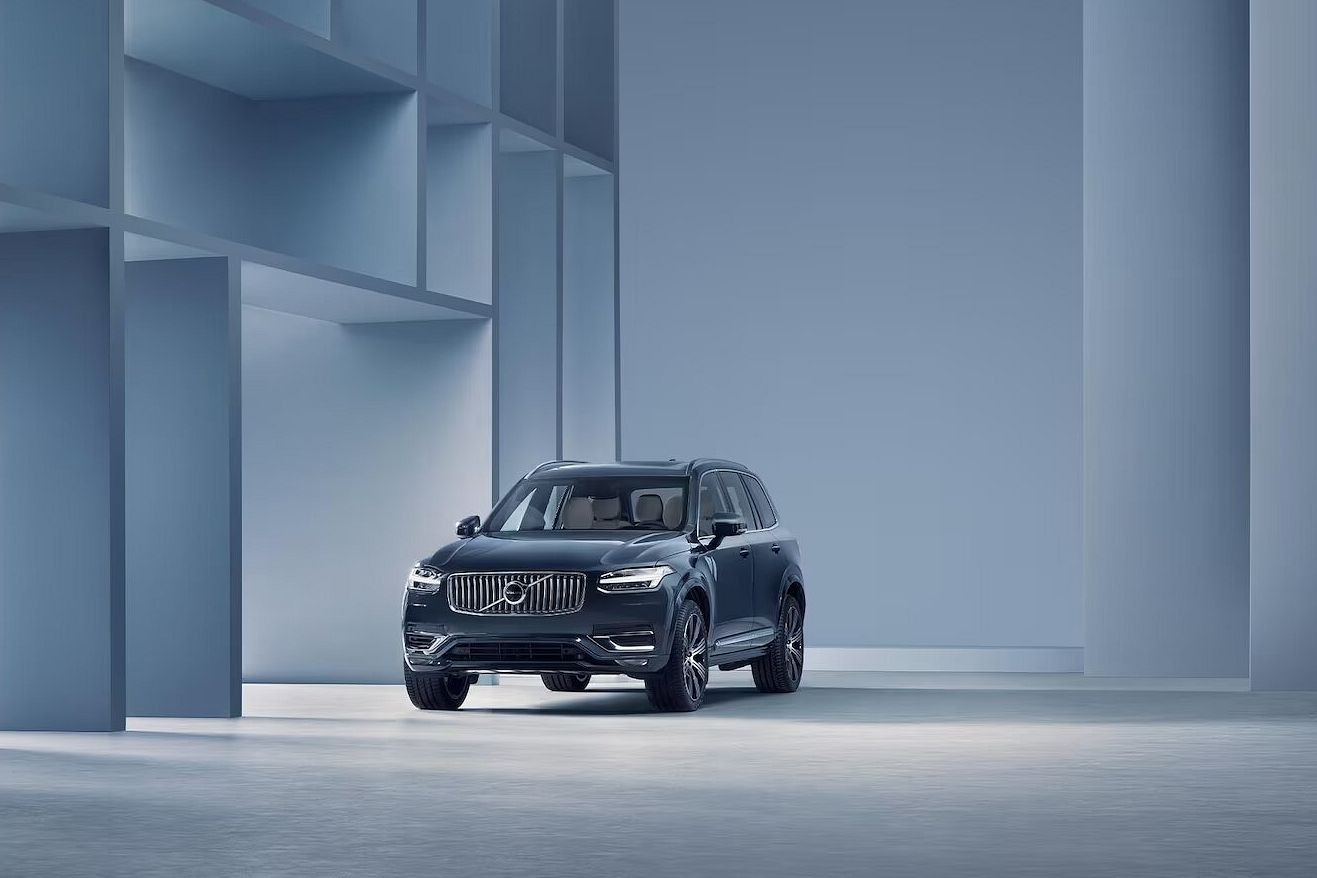
The Volvo XC90 is a significant model in the brand's portfolio. It became Volvo's first SUV when it was introduced in the early 2000s and remains a strong seller. In the first half of 2021, 54,177 XC90s were sold globally, bettered only by the smaller XC60 and XC40 SUVs.
Although an electrified version of the current XC90 exists in the form of the XC90 Recharge, Volvo revealed a few days ago that the next-generation XC90 flagship will be a fully electric vehicle. This is a huge shift for the SUV so we took a stab at envisioning what it will look like based on everything we know. We also delved into the incredibly advanced technology that will form the backbone of the SUV's infotainment and safety systems.
Shortly after confirming that the next XC90 will ditch gas power, Volvo revealed the Concept Recharge which hints at what the new flagship will look like. It's got a distinctive wagon-like profile that appears a bit odd at first but the look is partially a result of removing an engine and replacing it with a full battery pack beneath the flat floor. This has allowed for an extended wheelbase and shorter overhangs, along with a lower hood.
Our render artist blended the concept's unique proportions with some of the elements of Volvo's existing large SUVs, and the wheels are shared with the stylish C40 Recharge. As expected, there is no traditional front grille.
While the proportions of the next-gen SUV will take some time to get used to, concepts can often morph into something entirely different by the time they reach the production stage so the new XC90 may look quite different. There's no doubt that it'll showcase the latest technology underneath the skin, though.
Volvo has said that its flagship electric SUV's safety suite will include LiDAR tech, an autonomous driving computer, and over-the-air updates that will improve the vehicle's safety features over time. On the top of the windshield, the LiDAR sensor is visible. These features will be powered by the standard NVIDIA DRIVE Orin system-on-a-chip.
Zenseact, the brand's autonomous driving software development company, developed a new Highway Pilot function. This will make autonomous highway driving possible whenever it is safe to do so and in areas where it is legal. These systems have the shared goal of helping the automaker to avoid collisions altogether.
In the Concept Recharge, the electric-only technology base moves away from older Volvo EVs, which shared a floor with their combustion siblings, something that compromised packaging. The next-gen Volvo EV will have a lengthened wheelbase and repositioned seats but the same high eye point of today's XC90. Based on the Concept Recharge, rear passengers will sit in an elevated position, there's plenty of legroom, and the driver gets both a digital display and a head-up display.
Another key focus area has been the development of Volvo's new operating system, created with assistance from companies like Linux and Android. Known as VolvoCars.OS, the system will support more regular over-the-air updates to continuously improve the new XC90 over time. To reduce complexity, especially in a modern vehicle with multiple features, a central "brain" will process information from numerous sensors, the cloud, map data, and more.
Volvo has smartly opened this new operating system to third party developers via open APIs, another step that will ensure the best possible functionality for the driver and occupants.
One area in which customers will need to be won over is when it comes to data collection. This real-time data collection process, which is an opt-in system, will allow the company to analyze and roll out improved features much more quickly.
In the Concept Recharge and likely the production XC90 to follow, many functions can be managed via an expansive 15-inch touchscreen, set in a minimalist cabin that features natural materials and is typically Scandinavian in its presentation. Volvo's next-gen cars will seamlessly connect to your phone, using it as a key, and paying for charging will be as simple as possible. Volvo's relationship with Google will continue, allowing for easy integration of features like Google Maps and Google Play.
While specifics regarding the next-gen XC90's powertrain are unknown, we do know that it will introduce improved lithium-ion battery tech as the brand chases faster charging times and a longer range. Volvo said that its new SUV will also offer bi-directional charging capability. The company is targeting a range of 1,000 km (621 miles) in the not-too-distant future, a result of boosting the energy density in battery cells by around 50%.
With its fully electric powertrain, unique proportions, spacious cabin, advanced safety features, and an all-new operating system, the next-gen Volvo XC90 will have surprisingly little in common with its predecessor when it arrives next year. It could provide the Tesla Model X with a stern challenge, and we expect it to exceed the current XC90 Recharge's starting price of over $60,000.
